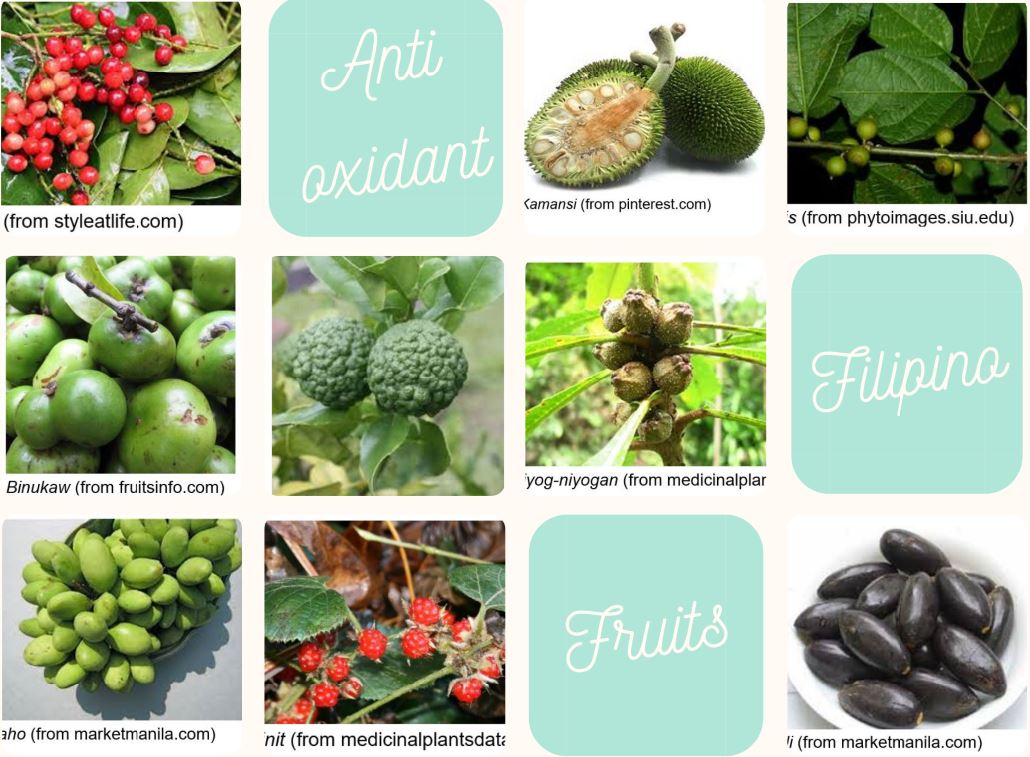
Here’s a list of 9 fruits grown in the Philippines revealed by the University of the Philippines researchers to be rich in antioxidants that fight illnesses like cancer and heart disease.
The Department of Science and Technology released the report that UP Los Baños (UPLB) chemists have recently confirmed that the nine fruits have high amounts of antioxidants or those that take damage-causing free radicals from the body.
Free radicals in the body are formed either from our normal metabolic processes or from exposure to bad environment (i.e. cigarette smoke, air pollutants). Antioxidants then take up these free radicals, thereby preventing them from causing any harm from your body.
The 9 indigenous fruits rich with antioxidants are
1. as-is
2. binukaw
3. kamansi
4. kolong-kolong
5. niyog-niyogan
6. paho
7. sampinit
8. pili
9. bignay
Among the nine, paho, binukaw and as-is have the highest total phenolics. Phenolics are a collective term for phenols, flavonoids, lignin, and tannins, that are considered antioxidants. Experts all over the world consider these chemicals to have strong anti-cancer, anti-diabetic, and anti-inflammatory benefits, among others.
Whether ripe or unripe, the mango-lookalike paho can be eaten fresh or mixed with salads. They can thrive anywhere in the country but they are mostly grown in Cavite and Batangas.
Meanwhile, binukaw or batuan can be a souring agent or (pampaasim) in some dishes in the Visayas. On the other hand, the leaves and young shoots of as-is are a favorite in the Bicol region.
Pili could be the most famous among the nine due to pili nuts being brought as pasalubong by those who came back from Bicol. Pili was found to be rich in alkaloids that help protect the body from parasites.
Bignay are made into jams, wines, and vinegar, if not eaten raw. It is rich in terpenes which have pain-relieving and lipid-lowering properties. It grows in Batangas and in the Visayas. Kamansi, on the other hand, is sliced thinly and mixed with coconut milk to make a sumptuous vegetable dish. Sampinit is considered as the local wild raspberry that grows mostly in Quezon and Laguna. All are found to be rich in antioxidants.
Kabuyaw or kolong-kolong in some areas, can be used as juice for a sour but vitamin-rich drink. It is thought that the town of Cabuyao is named after this because of its abundance in the area.
The Bicol-endemic niyog-niyogan has the highest cardiac glycosides among the nine. What cardiac glycosides do is that it increases the force of cardiac contraction, thereby preventing congestive heart failure. Others call this as lubi-lubi.
Except for pili, these fruits are considered indigenous because they are underutilized or are not as widely cultivated as the more popular ones like mango, banana, and pineapple.
Writing in the Philippine Journal of Science (PJS), Associate Professor Mariam C. Recuenco of UPLB Institute of Chemistry and colleagues report that considering the diverse fruit species in the country, there are many more fruits that can be potential sources of bioactive compounds. PJS is a peer-reviewed publication of the Department of Science and Technology.
Looking forward, the UPLB researchers hope that other farmers will start cultivating these less popular plants and develop these underappreciated but very nutritious fruits into sumptuous food products to satisfy one’s cravings with healthier benefits.
Earlier in October, a UPLB Botanist named medicinal plants for potential COVID 19 treatment.
The country’s agriculture chief also local fruits and vegetables that can help fight off infections like novel coronavirus.
SEND CHEERS in the comments below to UPLB researchers for confirming the antioxidant levels of Philippine fruits.
Want to know how to be a Proud Pinoy? Like, Follow, Subscribe to GoodNewsPilipinas.com, and our socials Facebook, Twitter, Instagram, Good News Pilipinas! TV on YouTube, for new good story notifications and e-mail newsletters for updates on more Filipino Pride stories










